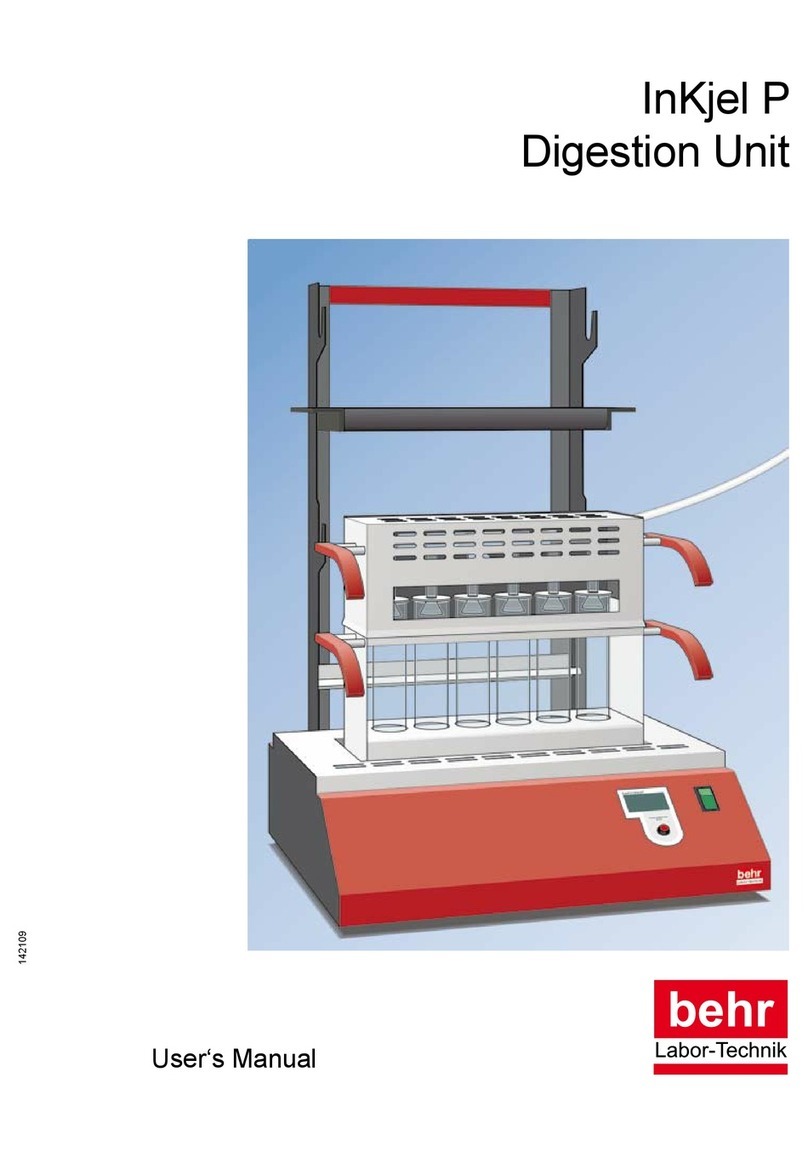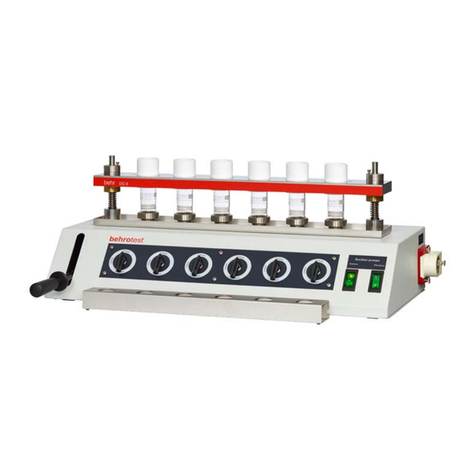
– 5 –
behrotest®K8 / K12 / K20 / K16 / K24 / K40
059111
© behr Labor-Technik GmbH
Scope of supply
Please check the contents of the pack for completeness
and freedom from damage immediately upon receipt.
Claims resulting from damage during transportation
which is externally apparent must be lodged immediately
with the carrier (i.e., the post/mail service, the railway
administration, the freight organization, etc.) - see the
label on the packaging.
In case of damage which is not apparent from outside
(„concealed transportation damage“), please contact the
behr after-sales service immediately upon discovery of
the damage. The same applies in the case of any other
complaints.
Address:
behr Labor-Technik GmbH
Spangerstrasse 8
D-40599 Düsseldorf, Germany
Telephone: (+49 211) 7 48 47 17
Telefax: (+49 211) 7 48 47 48
e-mail: info@behr-labor.com
Your K8 / K12 / K20 / K16 / K24 / K40 digestion unit is
packed in three parts:
Heating block, ready assembled with mounting rail for
sample rack and exhaust collector
Sample rack
Exhaust collector, ready assembled, with glass grid
and mounting frame
Plus
1 set of sample vessels matching to the digestion unit
Exhauster hose for connection to a behrosog process
exhauster system, for example
Drip pan, to be installed under the exhaust collector.
Correct use of the device
The behrotest® K8 / K12 / K20 / K16 / K24 / K40 diges-
tion unit is used for heating of samples in the appropriate
digestion tubes. It is used, in particular, for quantitation of
total nitrogen using the Kjeldahl digestion method.
The digestion unit can be heated to 430 ° C. Always
ensure that you have selected the temperature program
appropriate to your samples. Use the digestion tubes
appropriate to this temperature, e.g. behrotest®diges-
tion tubes. Only use the appropriate type of digestion
tubes (round-bottom tubes).
Please under all circumstances note and adhere to the
following items, in order to ensure the greatest possible
operating safety and reliability and the longest possible
service-life for your digestion unit:
Always operate the appliance in accordance with
the instructions and data contained in this operating
manual!
Modifications to the appliance will result in forfeit of
any guarantee claims and can result in serious defici-
encies in the unit‘s operating safety and reliability.
During te Kjeldahl digestion, solfuric acid vapours
(and other aggressive gases) are set free. Always
operate the appliance with a scrubber system (e. g.
behrosog) and place the appliance and the scrubber
in a fume cupboard.
Never under any circumstances expose the dige-
stion unit to aggressive vapours, such as fumes from
acids, alkalis or solvents!
Always operate the behrotest® K8 / K12 / K20 / K16 /
K24 / K40 digestion unit under normal laboratory condi-
tions.
































